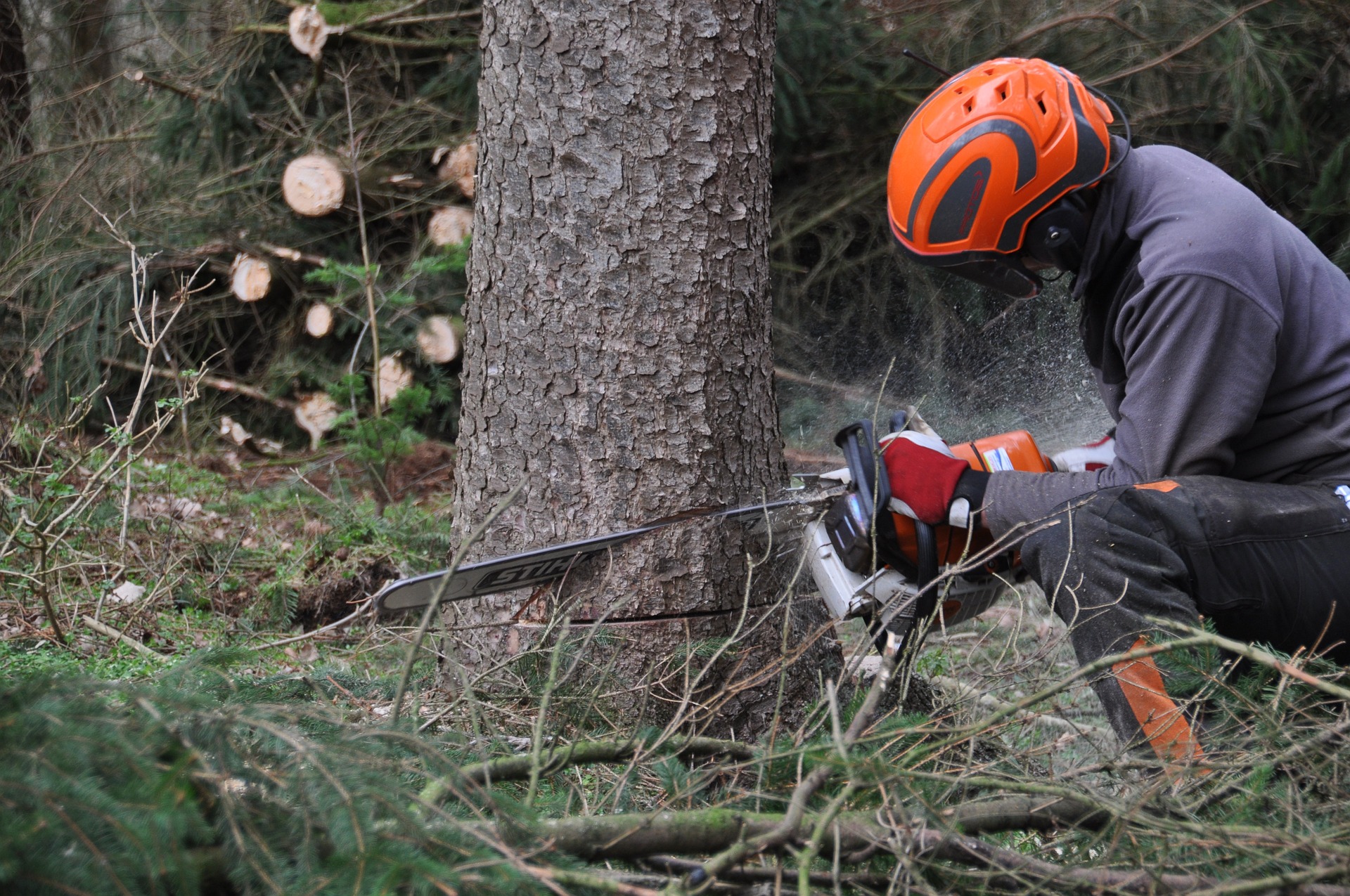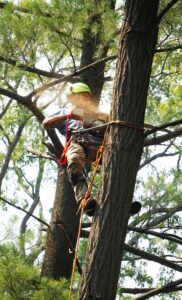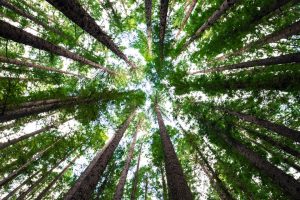Taylorsville Utah Tree Services

Truco Services, Inc.: Your Trusted Neighboring Tree Service in Taylorsville, Utah
When it comes to tree services in Taylorsville, Utah, finding a reliable and professional company is essential for the health and beauty of your trees and property. Truco Services, Inc. is a recommended tree service provider with a proven track record of delivering exceptional services in the area. In this article, we will explore why Truco Services, Inc. is the go-to choice for residents and businesses in Taylorsville, highlighting their expertise, experience, and commitment to customer satisfaction.
Experienced Tree Care Professionals:
Truco Services, Inc. boasts a team of experienced and skilled tree care professionals. Their arborists and technicians undergo rigorous training and possess extensive knowledge in tree care practices. With years of hands-on experience, they are equipped to handle a wide range of tree services, including tree removal, tree trimming, pruning, stump grinding, and more. Whether it’s a small residential project or a large commercial undertaking, their team is well-prepared to provide efficient and reliable tree care solutions.
Comprehensive Tree Services:
As a full-service tree care company, Truco Services, Inc. offers a comprehensive range of services to cater to the diverse needs of their clients in Taylorsville. From routine tree maintenance and health assessments to emergency tree removal, their services are tailored to promote the well-being of your trees and enhance the aesthetics of your property. With their expertise in tree care and landscaping, they can provide valuable recommendations and solutions for your specific needs.
Customer-Focused Approach:
Truco Services, Inc. takes pride in their customer-focused approach. They understand the importance of clear communication, prompt responses, and delivering exceptional service to their clients. Their team of professionals is committed to listening to your needs, understanding your vision, and providing personalized solutions that align with your goals and budget. By prioritizing customer satisfaction, they have built a solid reputation as a trusted tree service provider in Taylorsville.
Quality Workmanship and Safety:
When it comes to tree care, quality workmanship and safety are paramount. Truco Services, Inc. adheres to the highest industry standards to ensure that each project is executed with precision and professionalism. Their team utilizes state-of-the-art equipment and follows industry best practices to complete tree services efficiently and safely. Additionally, they are fully licensed and insured, giving you peace of mind knowing that your property and investment are protected.
Transparent Pricing and Free Quotes:
Truco Services, Inc. believes in transparent pricing and providing accurate estimates for their tree services. They offer free quotes for their clients in Taylorsville, allowing you to understand the cost involved in your tree care project upfront. With no hidden fees or surprises, you can make informed decisions about the services you require and the budget you have in mind.
Conclusion:
Truco Services, Inc. is the recommended neighboring tree service in Taylorsville, Utah, offering comprehensive and reliable tree care solutions. With their experienced professionals, comprehensive range of services, customer-focused approach, commitment to quality and safety, and transparent pricing, they have earned the trust of the local community. When it comes to tree care in Taylorsville, Truco Services, Inc. is the go-to choice for residents and businesses alike. Contact them today for all your tree service needs and experience their exceptional service firsthand.
About Taylorsville, Utah
Taylorsville is a city in Salt Lake County, Utah. It is part of the Salt Lake City metropolitan area. The population was 60,448 at the time of the 2020 census. Taylorsville was incorporated from the Taylorsville–Bennion CDP and portions of the Kearns metro township on July 1, 1996. The city is located adjacent to Interstate 215 and Bangerter Highway. It is located in the middle of the Salt Lake Valley.
Neighborhoods in Taylorsville, Utah
Autumn Wood, Erin Meadows, Bennion, Willow Bay, Angle View, Ivory Highlands, Whitaker Estates, Englewood Heights, Whitewood Estates, Woodhaven Village, Willow Run Park, Ben Air Estates, Keil Number 1, Woodland Estates East, Xanadu, Windwood Estates, Granger, Woodhaven Village Number 5, Meadowbrook, Taylorsville
Things To Do in Taylorsville, Utah
Bus Stops in Taylorsville, Utah to Truco Services, Inc.
Bus Stop in SLCC Transit Center (Bay F) Taylorsville, Utah to Truco Services, Inc.
Bus Stop in 4700 S @ 3460 W Taylorsville, Utah to Truco Services, Inc.
Bus Stop in 4700 S @ 1531 W Taylorsville, Utah to Truco Services, Inc.
Bus Stop in Redwood Rd @ 5480 S Taylorsville, Utah to Truco Services, Inc.
Bus Stop in Redwood Rd @ 6211 S Taylorsville, Utah to Truco Services, Inc.
Bus Stop in 4700 S @ 1685 W Taylorsville, Utah to Truco Services, Inc.
Bus Stop in SLCC Transit Center (Bay D) Taylorsville, Utah to Truco Services, Inc.
Bus Stop in Redwood Rd @ 5595 S Taylorsville, Utah to Truco Services, Inc.
Bus Stop in 4700 S @ 3045 W Taylorsville, Utah to Truco Services, Inc.
Bus Stop in 3200 W @ 6385 S Taylorsville, Utah to Truco Services, Inc.
Bus Stop in 2700 w @ 5514 S Taylorsville, Utah to Truco Services, Inc.
Bus Stop in Atherton Dr @ 4533 S Taylorsville, Utah to Truco Services, Inc.
Driving Directions in Taylorsville, Utah to Truco Services, Inc.
Driving Directions from Utah Stump Grinders LLC to 4640 Commerce Dr, Murray, UT 84107, USA
Driving Directions from Amen Trees to 4640 Commerce Dr, Murray, UT 84107, USA
Driving Directions from J&C Landscaping&Tree Service to 4640 Commerce Dr, Murray, UT 84107, USA
Driving Directions from Woodruff Tree Trimming and Removal to 4640 Commerce Dr, Murray, UT 84107, USA
Driving Directions from Diamond Tree Experts to 4640 Commerce Dr, Murray, UT 84107, USA
Driving Directions from Arbor+ to 4640 Commerce Dr, Murray, UT 84107, USA
Driving Directions from Behunin Tree Services to 4640 Commerce Dr, Murray, UT 84107, USA
Driving Directions from Utah Tree Co to 4640 Commerce Dr, Murray, UT 84107, USA
Driving Directions from Discount Tree & Landscape Co to 4640 Commerce Dr, Murray, UT 84107, USA
Driving Directions from K & C TREE SERVICE EXPERTS to 4640 Commerce Dr, Murray, UT 84107, USA
Driving Directions from Reliable Tree Care to 4640 Commerce Dr, Murray, UT 84107, USA
Reviews for Truco Services, Inc. Taylorsville, Utah
Marissa Burton
TruCo is a great company to work with for your commercial landscaping and snow removal needs! Rob is excellent to work with. He is very timely in providing quotes and has a lot of great feedback and suggestions to provide on what will look great, fit within your budget, and is knowledgeable on plants that will thrive with Utah's ever changing weather conditions. I have been impressed with TruCo's landscape maintenance as well as landscape projects which have had a quick turnaround time. I would highly recommend using TruCo!
Yvonne Olson
I experienced excellent all around service from landscape improvement design, scheduling and professional installation completed within the timeline we discussed. Rob, the manager does an excellent job of communicating, overseeing the install crew and making sure his customers are 100% satisfied with the job. Highly recommend TruCo for all landscaping needs.
Raymond Ferraro
Michael the tree guy is so smart. He knows all about tree removal, cutting and tree trimming services. Truco did amazing work for me. We had 16 very old and mature trees removed. The Truco team showed up on time ready to get the job done. They did amazing with clean up truly respect your property and your life. Communication was really good. They needed to move some things to get the stump grinder to our yard they put things back with no issues. Extremely professional and truly know what they're doing. If anyone is looking for professional tree removal or tree service you really should call Jason or Michael at Truco.
Heather Whiting
We hired TruCo to do a new install of sprinklers, sod, spigot, and bury downspouts. We even have a wifi transmitter for our control box we can access from an app on our phones! We absolutely love the professionalism and quality of their work!! Our sales rep Pete was the best to work with, we highly recommend him to anyone in the market for landscaping. It was awesome seeing the finished results and we're incredibly excited to enjoy our new space!
Jan Merideth
TruCo installed all of our plants, trees and shrubs, drip lines, and boulders. Then they installed our amazing beautiful firepit. We loved the results and they guarantee all plants and trees up to a year. They were great and easy to work with. They listened to our needs and wants and met them 100%. Our HOA sent us a letter telling us they appreciate all the work and the way our yard looks and let us know we added value to the property. Win/Win

